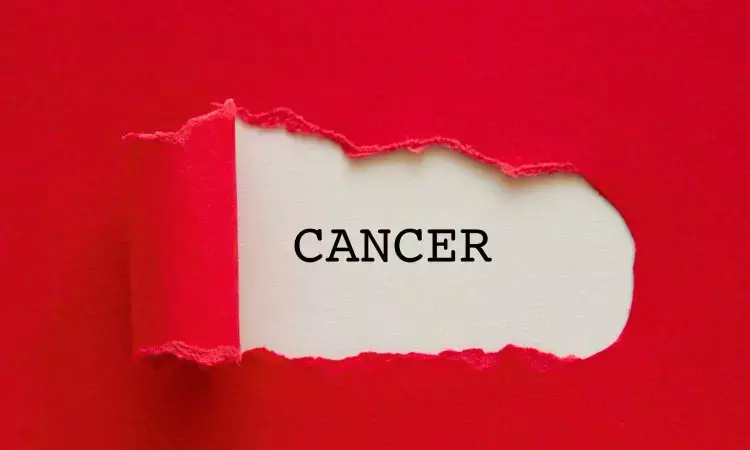- Home
- Medical news & Guidelines
- Anesthesiology
- Cardiology and CTVS
- Critical Care
- Dentistry
- Dermatology
- Diabetes and Endocrinology
- ENT
- Gastroenterology
- Medicine
- Nephrology
- Neurology
- Obstretics-Gynaecology
- Oncology
- Ophthalmology
- Orthopaedics
- Pediatrics-Neonatology
- Psychiatry
- Pulmonology
- Radiology
- Surgery
- Urology
- Laboratory Medicine
- Diet
- Nursing
- Paramedical
- Physiotherapy
- Health news
- Fact Check
- Bone Health Fact Check
- Brain Health Fact Check
- Cancer Related Fact Check
- Child Care Fact Check
- Dental and oral health fact check
- Diabetes and metabolic health fact check
- Diet and Nutrition Fact Check
- Eye and ENT Care Fact Check
- Fitness fact check
- Gut health fact check
- Heart health fact check
- Kidney health fact check
- Medical education fact check
- Men's health fact check
- Respiratory fact check
- Skin and hair care fact check
- Vaccine and Immunization fact check
- Women's health fact check
- AYUSH
- State News
- Andaman and Nicobar Islands
- Andhra Pradesh
- Arunachal Pradesh
- Assam
- Bihar
- Chandigarh
- Chattisgarh
- Dadra and Nagar Haveli
- Daman and Diu
- Delhi
- Goa
- Gujarat
- Haryana
- Himachal Pradesh
- Jammu & Kashmir
- Jharkhand
- Karnataka
- Kerala
- Ladakh
- Lakshadweep
- Madhya Pradesh
- Maharashtra
- Manipur
- Meghalaya
- Mizoram
- Nagaland
- Odisha
- Puducherry
- Punjab
- Rajasthan
- Sikkim
- Tamil Nadu
- Telangana
- Tripura
- Uttar Pradesh
- Uttrakhand
- West Bengal
- Medical Education
- Industry
Cancer care from oncology subspecialists has doubled since 2008, reveals research

A retrospective cohort study aimed to quantify trends in oncologist subspecialization and assess differences in subspecialized cancer care utilization in the U.S. The researchers found that between 2008 and 2020, oncology subspecialization increased significantly, however, gaps in utilization between high- and low- income areas have grown despite higher cancer mortality in low-income areas. These differences in utilization could reflect systematic barriers to care. The study is published in Annals of Internal Medicine.
Researchers from Harvard T.H. Chan School of Public Health and colleagues studied Medicare claims data from over 3.2 million fee-for-service Medicare beneficiaries initiating chemotherapy between 2008 and 2020. The five most common cancer categories among beneficiaries were breast, gastrointestinal, hematologic, prostate/genitourinary, and thoracic. The researchers assessed trends in subspecialization of oncologists by classifying them based on the proportion of chemotherapy episodes they managed for specific cancer types annually.
To assess changes over time in the proportion of chemotherapy episodes, by cancer type and across hospital referral regions (HRRs), that were treated by subspecialists, the researchers examined the proportion of chemotherapy episodes each year that were managed by a subspecialist of the relevant cancer type. The researchers found that between 2008 and 2020, the proportion of chemotherapy episodes managed by subspecialists increased from 9% to 18%.
The proportion of chemotherapy episodes treated by subspecialists varied across the five most common cancer types in 2008; however, by 2020, the proportion of cancer types managed by subspecialists increased significantly. The gap between the number of chemotherapy episodes managed by subspecialists in the largest HRRs versus smaller HRRs grew significantly between 2008 and 2020, with the largest HRRs having 33.4% of episodes managed by subspecialists, whereas the smallest HRRs had only 9.6%. Most HRRs experienced increases in subspecialist involvement over time; however, HRRs in the rural Mountain West and Northern Great Plains reported fewer than 5% of chemotherapy episodes managed by subspecialists in 2020.
They also found that subspecialist utilization did not align with local cancer burden as measured by county-level mortality, suggesting that areas with higher cancer burden had lower utilization of subspecialist care. While subspecialization within oncology has increased significantly, differences in the utilization of subspecialists mirror broader patterns of delayed adoption of medical innovations among physicians serving rural, low-income, and minority populations.
Reference:
:René Karadakic, Christopher Manz, Geographic Variation in the Utilization of Cancer Care From Subspecialized Medical Oncologists in the United States, 2008 to 2020, Annals of Internal Medicine, https://doi.org/10.7326/ANNALS-25-00102.
Dr Kamal Kant Kohli-MBBS, DTCD- a chest specialist with more than 30 years of practice and a flair for writing clinical articles, Dr Kamal Kant Kohli joined Medical Dialogues as a Chief Editor of Medical News. Besides writing articles, as an editor, he proofreads and verifies all the medical content published on Medical Dialogues including those coming from journals, studies,medical conferences,guidelines etc. Email: drkohli@medicaldialogues.in. Contact no. 011-43720751


